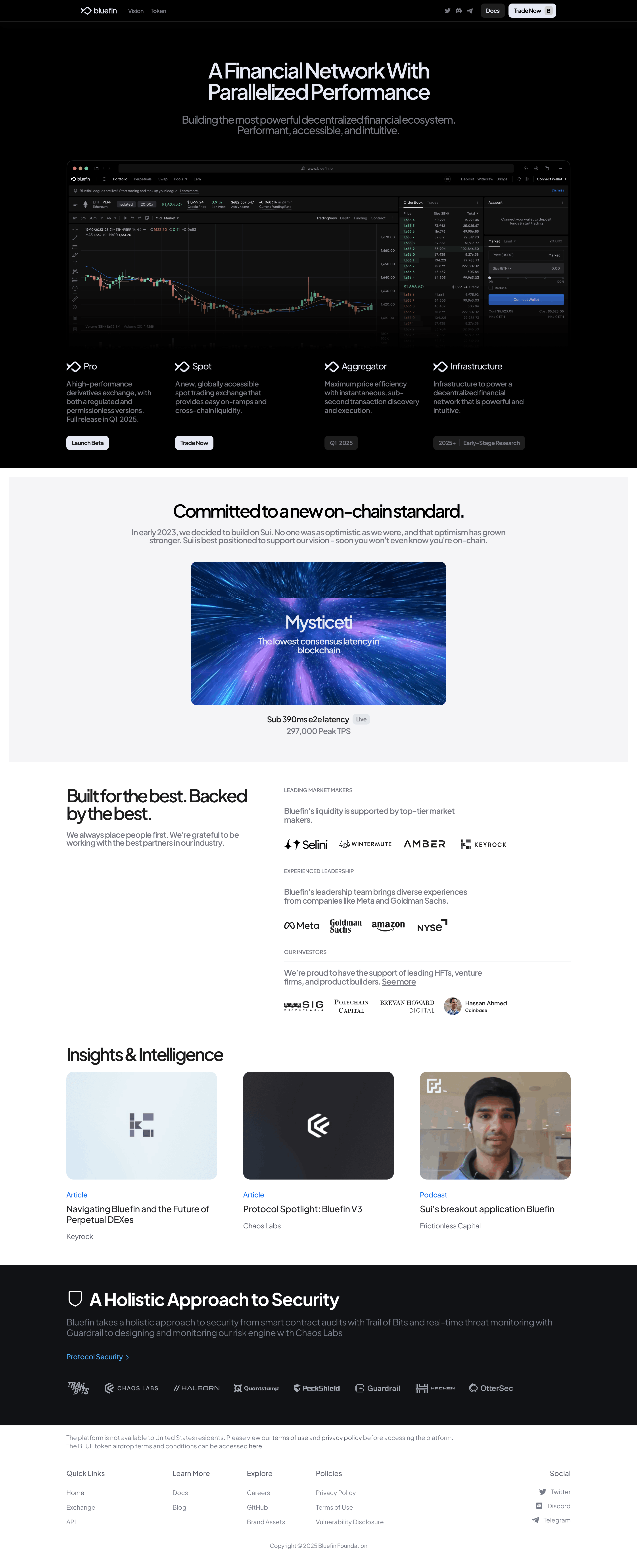Bluefin Exchange: Revolutionizing Decentralized TradingIntroduction
The world of decentralized finance (DeFi) has seen exponential growth over the past few years, with decentralized exchanges (DEXs) playing a pivotal role in enabling trustless, permissionless trading. Among the emerging platforms in this space, Bluefin Exchange has gained significant attention for its innovative approach to decentralized trading.
Bluefin is a next-generation decentralized derivatives exchange built on the Sui blockchain, designed to offer a seamless, secure, and high-performance trading experience. With its focus on scalability, user experience, and institutional-grade infrastructure, Bluefin is positioning itself as a major player in the DeFi ecosystem.
In this article, we will explore the key features of Bluefin Exchange, its underlying technology, advantages over competitors, and its potential impact on the future of decentralized trading.
What is Bluefin Exchange?
Bluefin Exchange is a non-custodial, decentralized derivatives trading platform that allows users to trade perpetual contracts with low fees and deep liquidity. Unlike traditional centralized exchanges (CEXs) like Binance or Coinbase, Bluefin operates entirely on-chain, ensuring transparency and security while eliminating the need for intermediaries.
Built on the Sui blockchain, Bluefin leverages Sui’s high throughput and low latency to provide a trading experience comparable to centralized exchanges. The platform is designed to cater to both retail and institutional traders, offering features such as:
Perpetual swaps with up to 20x leverage
Deep liquidity through an efficient order book model
Low transaction fees due to Sui’s scalability
Self-custody trading, ensuring users retain control of their funds
Institutional-grade infrastructure with high-speed execution
Bluefin aims to bridge the gap between centralized and decentralized exchanges by combining the best aspects of both worlds—security and transparency of DeFi with the performance and usability of CEXs.
Key Features of Bluefin Exchange
1. Built on Sui Blockchain for High Performance
One of Bluefin’s standout features is its foundation on the Sui blockchain, a high-performance Layer 1 network designed for scalability and speed. Sui’s unique architecture allows for:
Sub-second finality, enabling near-instant trade execution
High throughput, capable of processing thousands of transactions per second
Low gas fees, making trading more cost-effective
By leveraging Sui, Bluefin avoids the congestion and high fees often associated with Ethereum-based DEXs, providing a smoother trading experience.
2. Non-Custodial and Secure
Unlike centralized exchanges, where users must deposit funds into custodial wallets, Bluefin operates in a non-custodial manner. Traders maintain full control of their assets via smart contracts, reducing counterparty risk and eliminating the possibility of exchange hacks or insolvencies.
3. Advanced Order Book Model
Many decentralized exchanges rely on automated market makers (AMMs), which can lead to slippage and inefficient pricing for large trades. Bluefin, however, uses a central limit order book (CLOB) model, similar to traditional exchanges, ensuring:
Better price discovery
Tighter spreads
Higher liquidity for traders
This makes Bluefin particularly attractive for professional traders who require precise order execution.
4. Institutional-Grade Trading Experience
Bluefin is designed with institutional traders in mind, offering:
High leverage (up to 20x) for perpetual contracts
Low-latency trading with minimal slippage
API support for algorithmic trading strategies
Deep liquidity pools to facilitate large orders
These features make Bluefin a viable alternative to CEXs for hedge funds, market makers, and professional traders.
5. Cross-Margin Trading
Bluefin supports cross-margin trading, allowing users to utilize their entire portfolio balance as collateral. This maximizes capital efficiency and reduces liquidation risks compared to isolated margin systems.
6. Governance and Community-Driven Development
Bluefin is governed by its community, with the Bluefin DAO overseeing protocol upgrades, fee structures, and liquidity incentives. Token holders can participate in governance decisions, ensuring a decentralized and democratic development process.
Advantages Over Competing DEXs
While there are several decentralized exchanges in the market, Bluefin stands out due to:
Feature Bluefin Exchange Traditional DEXs (Uniswap, dYdX) Centralized Exchanges (Binance, Bybit) Custody Non-custodial Non-custodial Custodial (risk of hacks/freezes)
Trading Model Order Book (CLOB) Mostly AMM-based Order Book (CLOB)
Speed Sub-second (Sui) Slower (Ethereum congestion) Fast
Fees Low (Sui gas) High (Ethereum gas) Low but with withdrawal fees
Leverage Up to 20x Limited or none Up to 100x+
Transparency Fully on-chain Mostly on-chain Opaque (off-chain matching)
Bluefin combines the security of DeFi with the performance of CEXs, making it a strong contender in the derivatives trading space.
Potential Challenges and Risks
Despite its advantages, Bluefin faces some challenges:
Adoption Barriers – Many traders are accustomed to CEXs and may be hesitant to switch to a decentralized platform.
Liquidity Bootstrapping – New DEXs often struggle with liquidity; Bluefin must incentivize market makers.
Regulatory Uncertainty – Derivatives trading is heavily regulated in some jurisdictions, which could impact Bluefin’s growth.
Smart Contract Risks – While audits help, vulnerabilities in smart contracts could lead to exploits.
However, Bluefin’s strong infrastructure and focus on institutional adoption may help mitigate these risks over time.
The Future of Bluefin Exchange
Bluefin is well-positioned to become a leading decentralized derivatives platform. Future developments may include:
Expansion to other blockchains (modular interoperability)
Introduction of new derivatives products (options, futures)
Enhanced DeFi integrations (lending, staking, yield farming)
Institutional partnerships to boost liquidity
As DeFi continues to evolve, Bluefin’s combination of speed, security, and usability could make it a top choice for traders seeking a decentralized alternative to CEXs.
Conclusion
Bluefin Exchange represents a major step forward in decentralized trading, offering a high-performance, secure, and user-friendly platform for derivatives trading. By leveraging the Sui blockchain’s scalability and maintaining a non-custodial model, Bluefin provides a compelling alternative to both traditional DEXs and centralized exchanges.
While challenges remain, Bluefin’s focus on institutional-grade infrastructure, deep liquidity, and community governance sets it apart in the competitive DeFi landscape. As the platform grows, it has the potential to redefine how traders interact with decentralized markets, bridging the gap between CeFi and DeFi for a more open and efficient financial system.
For traders looking to embrace the future of decentralized finance, Bluefin Exchange is undoubtedly a project to watch.

